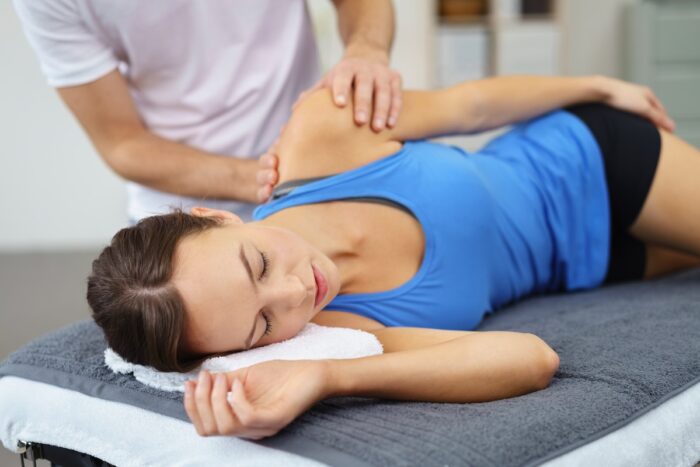Earle Abrahamson: Soft tissue therapies for golfers


We talk to Earle Abrahamson, CNHC Board Member, about the benefits of soft tissue therapies.

Earle Abrahamson is a Registrant Board Member of the Complementary and Natural Healthcare Council (CNHC), voluntary regulator of complementary healthcare practitioners in the UK, and is the Chair of the General Council for Massage Therapies (GCMT). Earle is an Associate Professor in Learning and Teaching at the University of Hertfordshire. In addition, he is an internationally published author, therapist, and psychologist, working actively in complementary therapies, specialising in sport, exercise massage and rehabilitation. Earle volunteered at the Birmingham 2022 Commonwealth Games as a soft tissue therapist, and has previously worked at the London 2012 Olympics and Paralympic Games and the 2017 World Athletic Championships.
What are soft tissue therapies?
Soft tissue therapies include a diverse range of techniques and practices that aim to impact the soft tissue structures in the body. These include, but are not limited to: the muscles, tendons, ligaments, fascia, blood vessels and nerves. Through soft tissue therapeutic techniques, the therapist can help release tension, improve blood supply, and aid in restoration of movement and movement patterns. Some of the more common soft tissue practices are massage and sports massage which include the systematic application of specific techniques to address dysfunction or injury.
How can these therapies help golfers?
Soft tissue therapy should be an integral component of a golfer’s training programme. For example, the deeper and
more intense soft tissue therapies offered by Sports Massage complements progressive training and minimises potential incidences of injury by reducing muscle tension. Not only are the physical benefits of massage apparent but equally the psychological ones, such as reduced stress, increased relaxation, and addressing feelings of anxiety and tension – which all help towards achieving better mental focus whilst competing.
What are your personal highlights of working with elite athletes?
For me it is about understanding the impact of my treatment on performance outcomes. I work synergistically with athletes to understand their goals and journeys and how sharing my expertise could improve their practice and performance. Through my work with elite golfers, I have learned about how I work and how my work is valued by those who receive it.
What should you look for when choosing a complementary therapist?
It is important that the therapist is properly trained and understands their particular scope of practice. Choosing a CNHC registered therapist ensures that they are professionally trained and qualified, fully insured and comply with our Code of Conduct, Ethics and Performance. This means acting professionally at all times, explaining interventions clearly, having the interest of the client at heart and working to deliver best care options.
The final choice of therapist is dependent on the client forming a rapport with the therapist based on
trust and professional skill. Choose a therapist who is trained in sport and can relate to your experience and goals. This could include a Massage, Sports Massage or Sports Therapy practitioner.
Find out more about CNHC The complementary and Natural Healthcare Council (CNHC) is a voluntary regulator of complementary healthcare practitioners in the UK, set up with government support and holds a register accredited by the Professional Standards Authority for Health and Social Care (PSA).
If you are looking for a complementary therapist to support your sports performance or your health and wellbeing in general, you can choose with confidence by searching CNHC’s online Accredited Register at www.cnhc.org.uk
June 29, 2023 10:09 am



Comments are closed here.